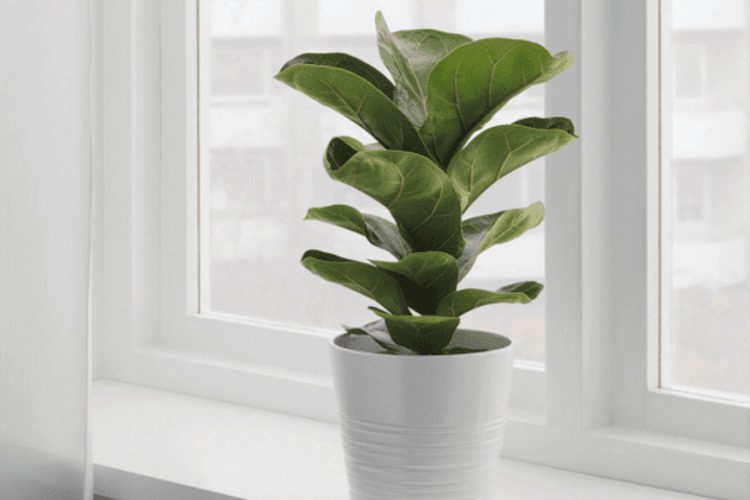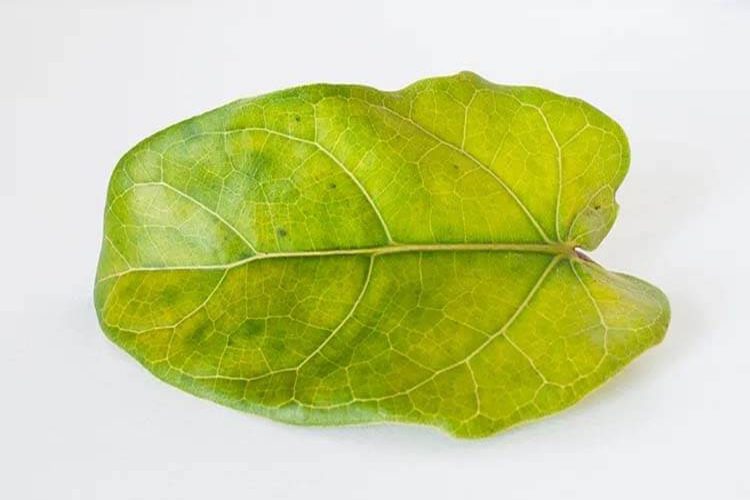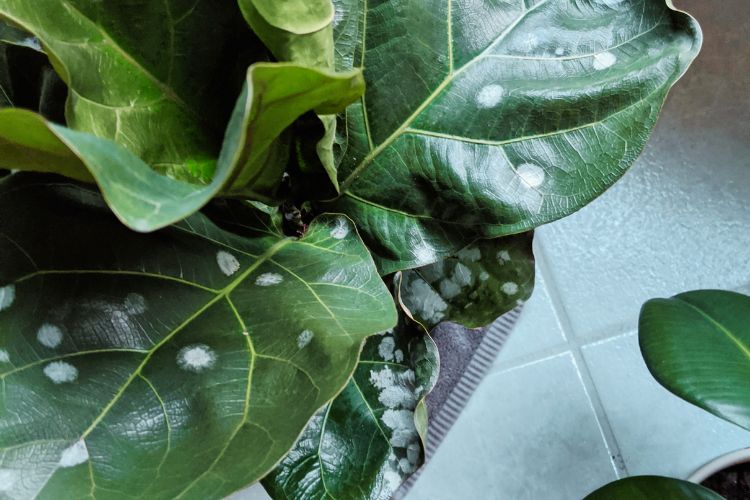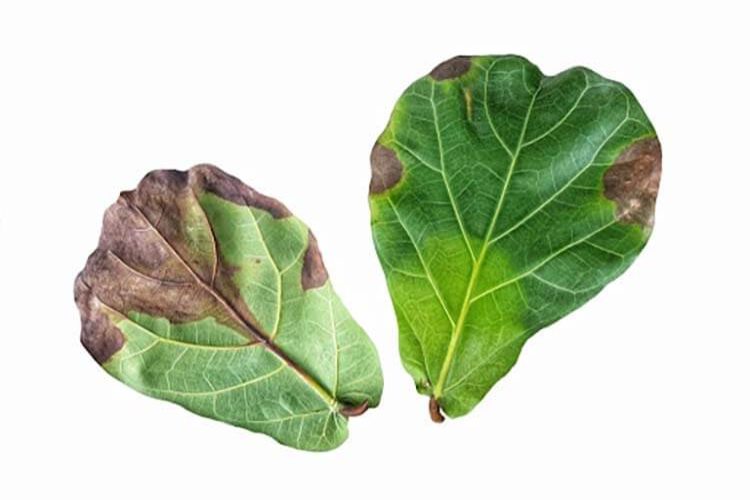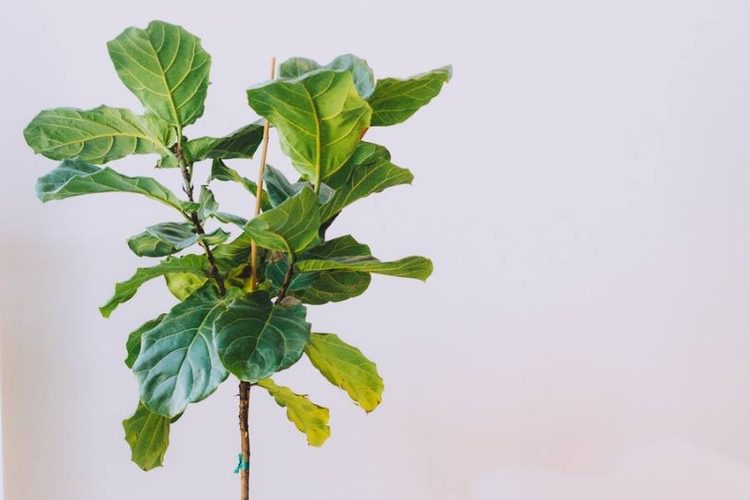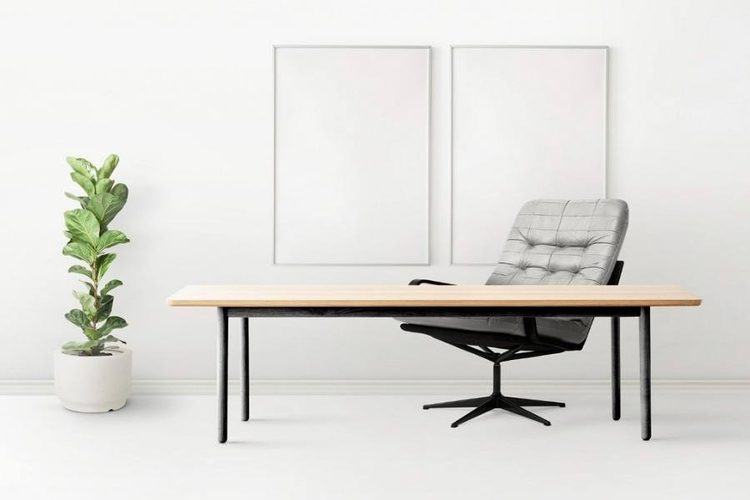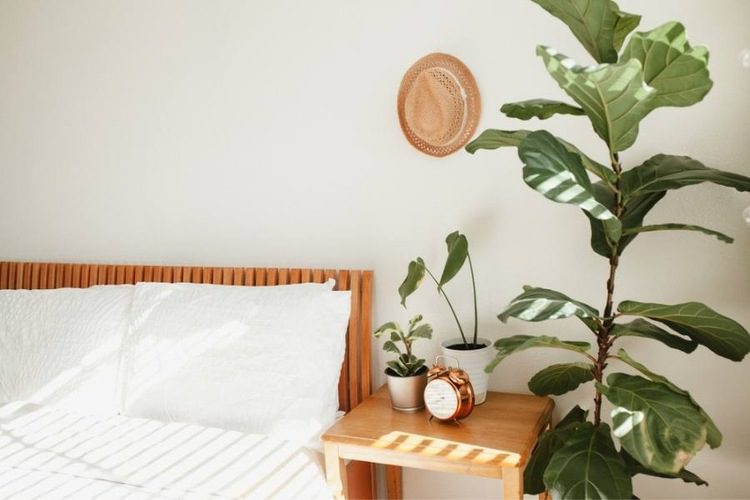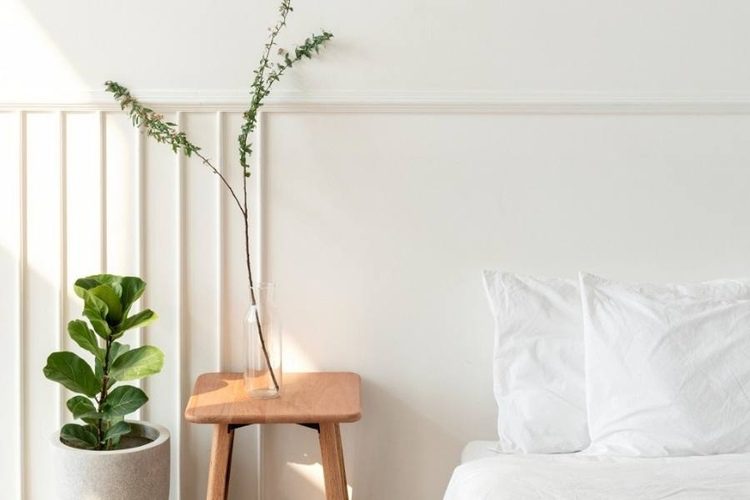Why Is My Fiddle Leaf Fig Dropping Leaves (Have Solutions)
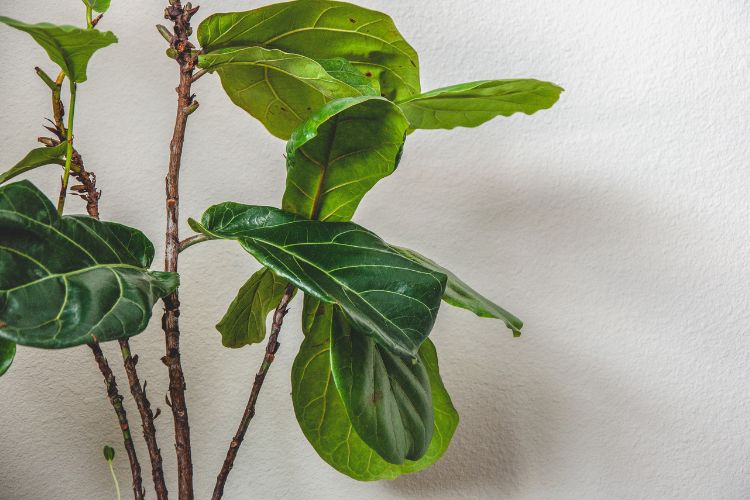
Fiddle-leaf fig-dropping leaves are one of the earliest and most typical indications of problems in these plants. The plant loses leaves when it needs help right away, and the development of fresh foliage could take months or even years, depending on its size.
If your plant is losing leaves, take immediate action to save it. How? Let’s find out together!
What are the main causes of fiddle leaf fig dropping leaves?
Fiddle leaf fig dropping leaves have three primary reasons: Movement shock, dry condition, or root rot. Finding out what is causing your plant to shed leaves is the first step toward quickly fixing the problem.
Movement shock
The shock of movement is the primary factor in leaf drop. When you buy a new fiddle leaf fig plant, it goes through a lot of shocks due to moving and adapting to being placed in a new setting since it prefers a steady environment and dislikes change.
Given that the plant was raised in a bright greenhouse with several other plants around and high relative humidity, the new illumination and humidity may both be much lower than what the plant is accustomed to. It may respond to shock by shedding older leaves at the center and bottom of the plant, which may be coupled with the physical stress of being bruised during transport.
Dry conditions
In this plant, dryness is the second main factor that contributes to leaf drop. It may shed leaves as a result of inadequate moisture and extremely dry air. Avoid placing your plants where they will frequently be exposed to dry air, such as in the direct sun or close to a heating vent. Picking a location away from any vents or bursts of hot air is essential since fiddle leaf figs do not appreciate heating.
Root rot
The third and most frequent reason for a fiddle leaf fig to lose its leaves is root rot, which frequently results from a combination of too much water and inadequate light. Brown or black patches are a surefire indication that this is the case. Examine your drainage and lighting conditions as soon as possible if your plant has fallen spotty leaves. Root rot must be treated right away, and our Houseplant Leaf Armor can shield your plant against bacteria, fungi, and insects. (As an extra benefit, this product cleans and polishes the leaves of your houseplant.)
What do dropping leaves look like on this houseplant?
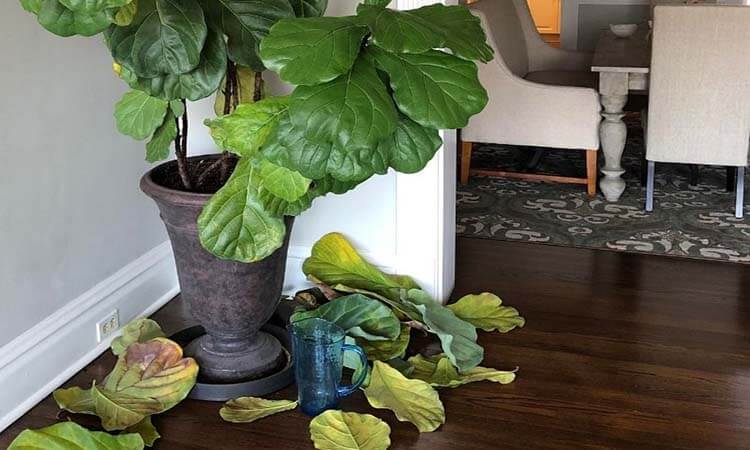
Nothing is more distressing for many plant owners than realizing that their cherished plant has lost one or many leaves! Take a deep breath before you attempt to hydrate your plants, detach them, acquire lamps, move them somewhere else, or monitor pests out of sheer fear.
The fact of the matter is that fiddle leaf figs sometimes shedding a leaf or two here and there is normal and even beneficial. Since they’re reproducing new leaves, all plants eventually lose their old ones. Maybe the fiddle leaf fig loses older leaves while it produces new ones to take their place. The following are indications that the drop on your plant are not alarming and are healthy.
The bottom is where the fiddle leaf fig’s leaves eventually fall
Since these plants experience most of their new growth at the top, the fiddle leaf fig’s bottom leaves are often the oldest, so they typically droop and finally fall off since the plant no longer requires them. Don’t be alarmed if you discover one or several of them at the bottom.
There are no brown marks on the fallen leaves
Brown spots are among the most common indicators of health issues in figs, so if the lowest leaves of your fiddle-leaf figs are falling and they are typically flawless—without brown spots or dots and with little to no crispiness—probably it’s just a typical, healthy leaf drop and doesn’t indicate a more serious problem.
The yellowness of fallen leaves is possible
Discoloration of fiddle leaf figs to yellowness on fallen leaves is usually not a problem, although it has much-decaying foliage since it receives excessive water, not quite enough light, or inadequate nutrients. However, if a lower leaf is yellow and falls off, it is because the plant is not actively caring for it and seems to be over.
In conclusion, anyone should relax if their plant sometimes sheds a lower leaf and turns yellow. It is still in excellent health and is simply undergoing a normal phase.
How to help the plant recover from losing leaves?
Inadequate hydration and/or climate are two contributing factors that lead to losing leaves. Saying the same thing, obtaining too much or too little water results in leaf droop. Check out solutions to help you recover the plant from this problem.
Cut the sick fiddle leaf fig leaves
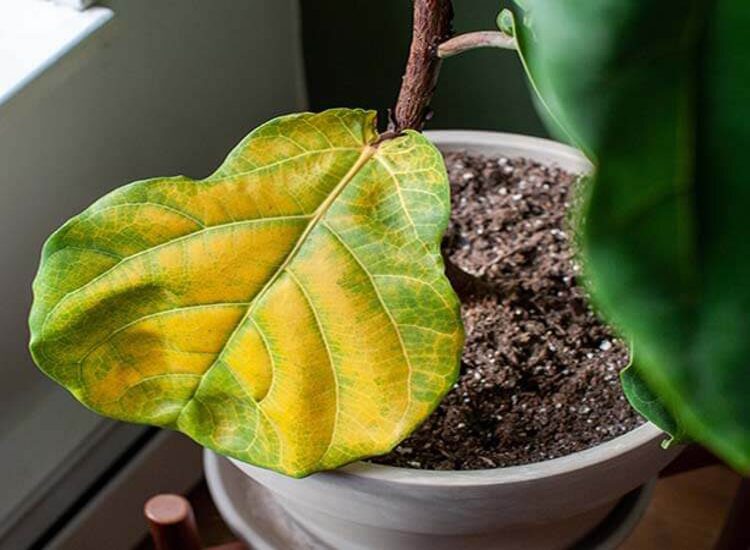
If the barren or brown branches seem to be rotten, avoid pruning the entire leaf. You also need to leave any brown areas alone since they can be covering fresh growth. Leaf sprouts will appear in the spring. If you recently bought this kind of fiddle leaf fig, be prepared for some leaves to fall as it adapts to their new surroundings. To ensure that a larger issue is not at play, keep an eye on the overall number of leaves lost.
Caring and recovery period
Consistency in lighting, humidity, and watering practices will aid in your plant’s recovery. Keep your new plant away from drafts, heating vents, and direct sunlight in a bright area. One to two inches of the topsoil should be dry before you water once per week. In addition, give your plant a few weeks to adjust to its new surroundings. Normally, every plant that’s already recovering from distress will have between 3 and 7 leaves.
Verify your water for the plant
Make sure you’re frequently watering your plant and keeping it in a stable location away from a heater if you feel that it is losing leaves as a result of dry air or a lack of water. Make doubly sure the root ball itself gets moist when you water your plant. Because water runs around the root ball and out of the container, you must water your plant until the roots start to explore the surrounding soil and become equipped with drainage. To ensure that the water is soaking through the roots, water gently at the base of the trunk.
Discuss drainage and lighting
Examine the drainage and lighting conditions right away if you see any black or brown patches on your plant or if the leaves are dropping. A fiddle leaf fig’s roots may rot due to a too-big container, incorrect soil, and an excessive amount of water that brings too much moisture.
These problems are exacerbated by a lack of sunshine, or the area has not had enough light for your plant. If you can, relocate it to a south-facing or large window if it is not in an area that receives a lot of light. If your issue is serious, you should repot your plant into a new container with excellent drainage and use quick-draining soil to ensure that your plant’s roots have access to air.
Learn more about How to stop leaf drop on Fiddle Leaf Fig in this video:
FAQs


